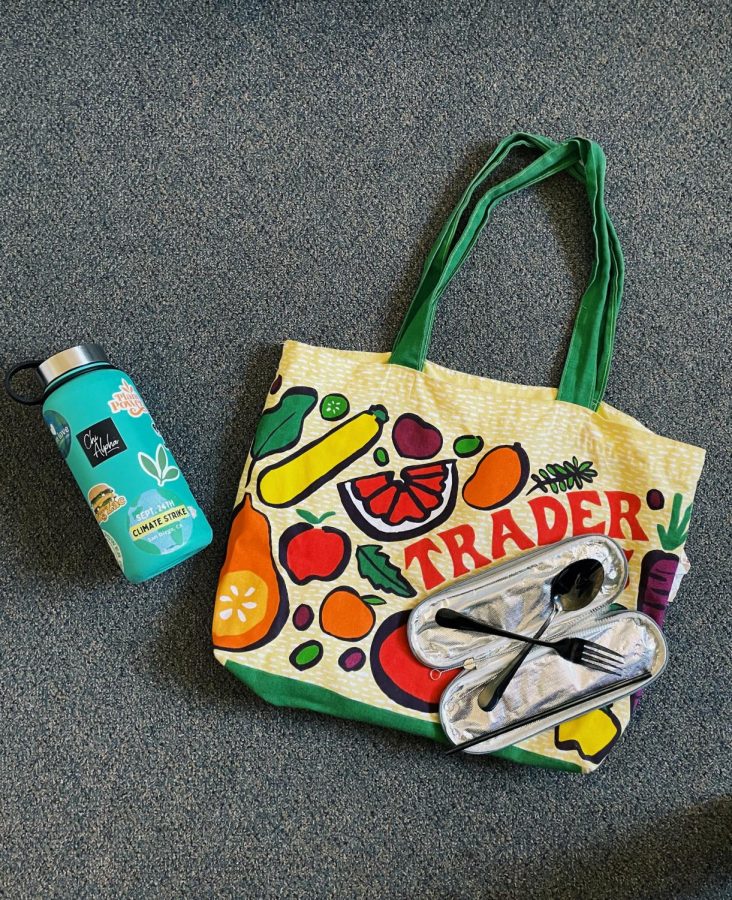It is October 2021 and we have suddenly found ourselves knocking on the door of climate catastrophe. The time has arrived in which we are confronted with the decisions of today that will directly impact the environmental prosperity of tomorrow.
As young people, we have a lot to fear as we walk into a future with a grim reality.
Will there still be snow for our children? Will California become uninhabitable? Where will our water come from?
We are beginning to face the dire truths behind the answers to these questions as we cross the line that separates the reversible from the irreversible.
The good news for us is that we haven’t crossed that line yet. There is still hope for our future and the future of our planet, but it requires a great deal of work for everyone involved.
The work required to help the planet through this crisis can become overwhelming when we feel as if our entire lives have to change. Although driving a Prius and transitioning to a vegan diet are highly effective ways to reduce our carbon footprint, these are not the only options.
There are many ways to start small that are much less daunting than never eating cheese again.
As young people living alone for the first time, it is important to recognize the small changes we can make to our routines that will have a positive impact on our planet.
To limit the sense of helplessness that may arise during this uncertain time, I have included a list of sustainable habits that we can easily incorporate into our daily lives:
Secondhand clothing and housing decor
As we resume our lives of college independence, it’s important for us to remember that splurging on clothing and room decor is bad for the environment.
It’s easy to fall into the habit of buying the best new and trendy grabs, but luckily for us, thrifting is even more trendy now than buying new.
Start purchasing all your new attire and housing decor from second-hand stores. In buying and selling to places like these, your consumer-waste footprint is being drastically reduced; not to mention your new stuff is way cool!
Goodbye plastic!
In switching to glass tupperware containers for snacks and leftovers, we are eliminating the purchase of plastics for food storage. Not only is it better for us, but the less plastic we buy, the less plastic we displace into the ocean.
The same goes for Ziploc bags. With class back in session, many of us are bringing lunches along to school. Rather than packing a sandwich or some crackers in a plastic Ziploc baggie, consider investing in a Stasher bag, or reusable silicone bags, to house your meals when you’re on the move.
Keep that metal straw handy
It’s great to get into the habit of keeping a metal straw in your backpack. This eliminates the use of a plastic straw that may be handed out with your beverage.
Reusable utensils are great to have on hand too, especially as a college student who’s eating out quite a bit. The plastic knives, forks, spoons and straws that we toss out after a meal contribute immensely to the plastic in our oceans. Be mindful of the vitality of our sea life and always have those tools handy!
No more red SOLO cups!
If there’s anything college students know how to do, it’s how to have a good time — an event usually marked by the number of red Solo cups littering the backyard the next day.
But there are ways to enjoy the party without hurting Mother Nature in the process. Consider exchanging those Solo cups for mason jars or a non-breakable alternative like bamboo. The use of reusable party decorations that may be fabric-based will also help to eliminate waste and will leave party decorations readily available for next time!
Fortunately, going green in the college scene isn’t as overwhelming or as expensive as it seems. Plus, the purchase of reusable products actually saves you money in the long run, so it’s a win-win for everyone.
Happy earth, happy wallet — and the party still goes on.
Lindsey Anderson is a senior studying rhetoric and writing.








